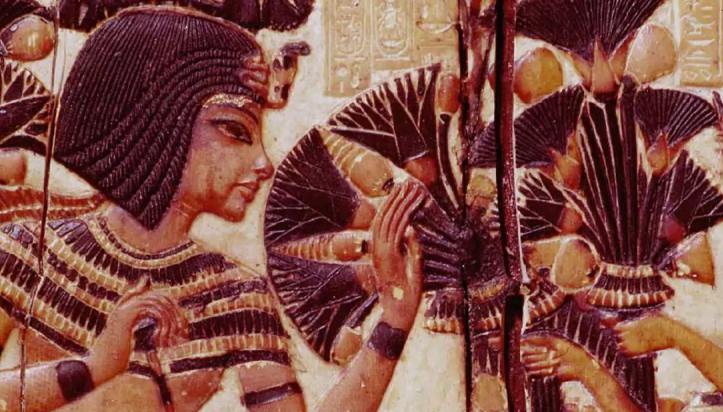When you hear the name Tutankhamun, you probably think of a golden death mask and whispers of a deadly curse. But the story of the ‘boy king’ is filled with fascinating secrets that go far beyond legend. Discovered in 1922 by Howard Carter, his tomb was a treasure trove, but the real secrets lie in the details of his life and hasty burial. What mysteries were sealed away with him for over 3,000 years?
📜 A King with Two Names
Did you know Tutankhamun wasn’t his original name? He was born Tutankhaten, meaning ‘living image of the Aten’, reflecting his father Akhenaten’s worship of a single sun god. A few years into his reign, the young king abandoned this religion and returned to the traditional worship of the god Amun. To signify this change, he renamed himself Tutankhamun, ‘living image of Amun’. To his people, however, he was known by his royal prenomen, Nebkheperure, which was the name inscribed in cartouches on monuments.
💔 A Body of Evidence
One of the most enduring mysteries is how Tutankhamun died at just 18 years old. His mummy has suffered significant damage over the millennia, making a definitive answer difficult. However, evidence of damage to his chest and legs suggests his death may have been accidental, perhaps from a chariot crash or a hunting injury. Another startling secret is that Tutankhamun’s heart is missing. The heart was considered the seat of reason and was essential for the afterlife, so its absence is highly unusual and might suggest the undertakers were careless or that his body was too decayed by the time it reached them.
🏺 A Borrowed Tomb?
For a king, Tutankhamun’s tomb is surprisingly small and cramped. This has led experts to believe it wasn’t originally intended for him. It’s possible he died too young to complete his own grand tomb and had to be buried in a substitute, non-royal one. Some theories even suggest that his successor, Ay, made a strategic swap, taking the more splendid tomb for himself. Even his coffins tell a story of haste and recycling; Egyptologists believe his middle coffin was originally made for an enigmatic predecessor named Neferneferuaten, whose face it still bears.
Bibliography:
BBC History Specials: Ancient World, 2025. Immediate Media Company London Limited, 2024.
- Curses: The History of the Evil Eye and Binding Magic
- Magical Plants: A Witch’s Garden of Herbs and Poisons
- Roman Magic: Curses, the Strix, and Everyday Protection
- Circe: The Greek Sorceress of Transformation and Myth
- Greek Magic: Hecate’s Power, Oracles, and Enchantresses
- Japanese Magic: Yōkai, Onmyōdō, and Supernatural Folklore
- Empress Chen Jiao: The Royal Scandal of Witchcraft in Han China
